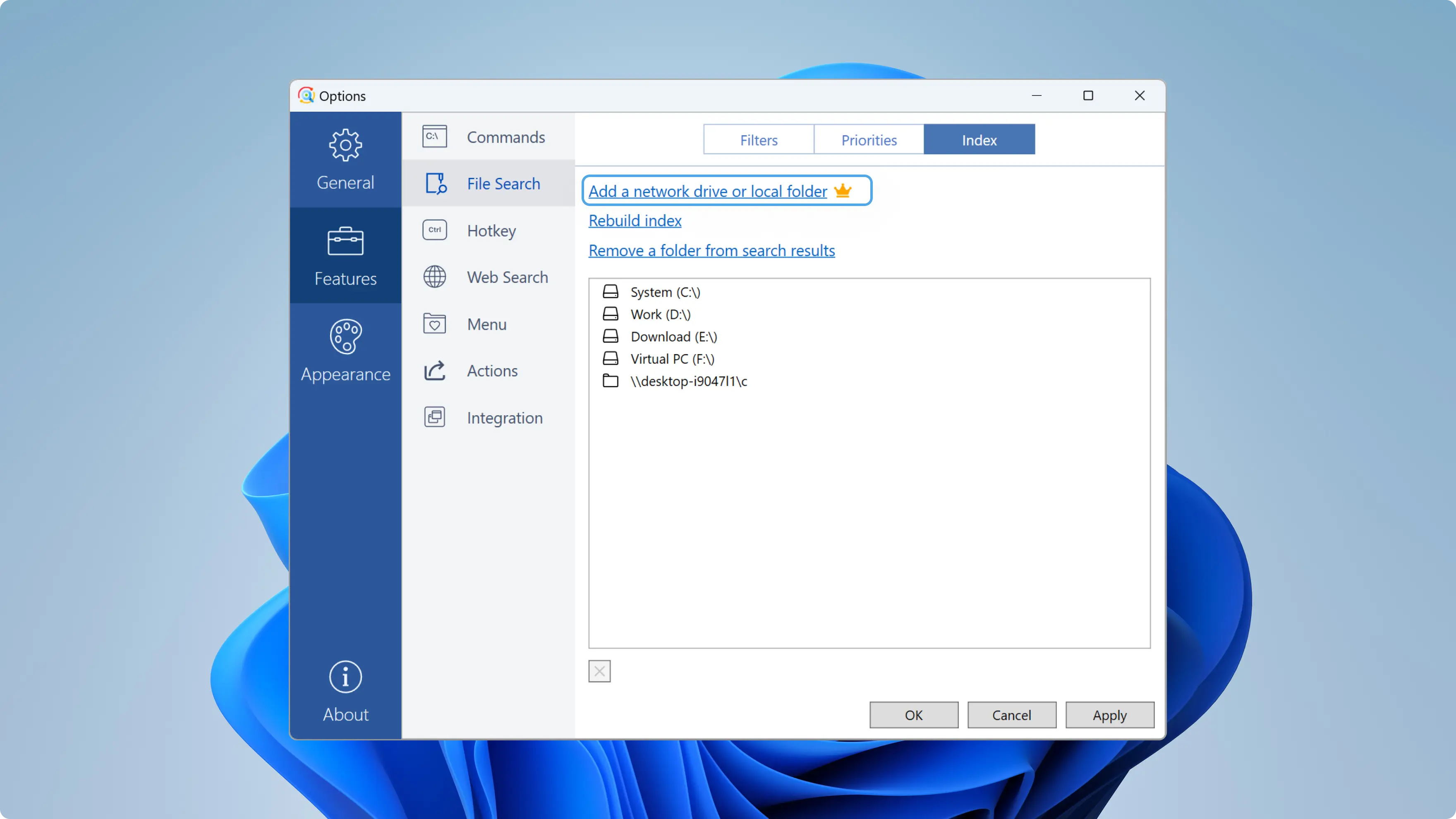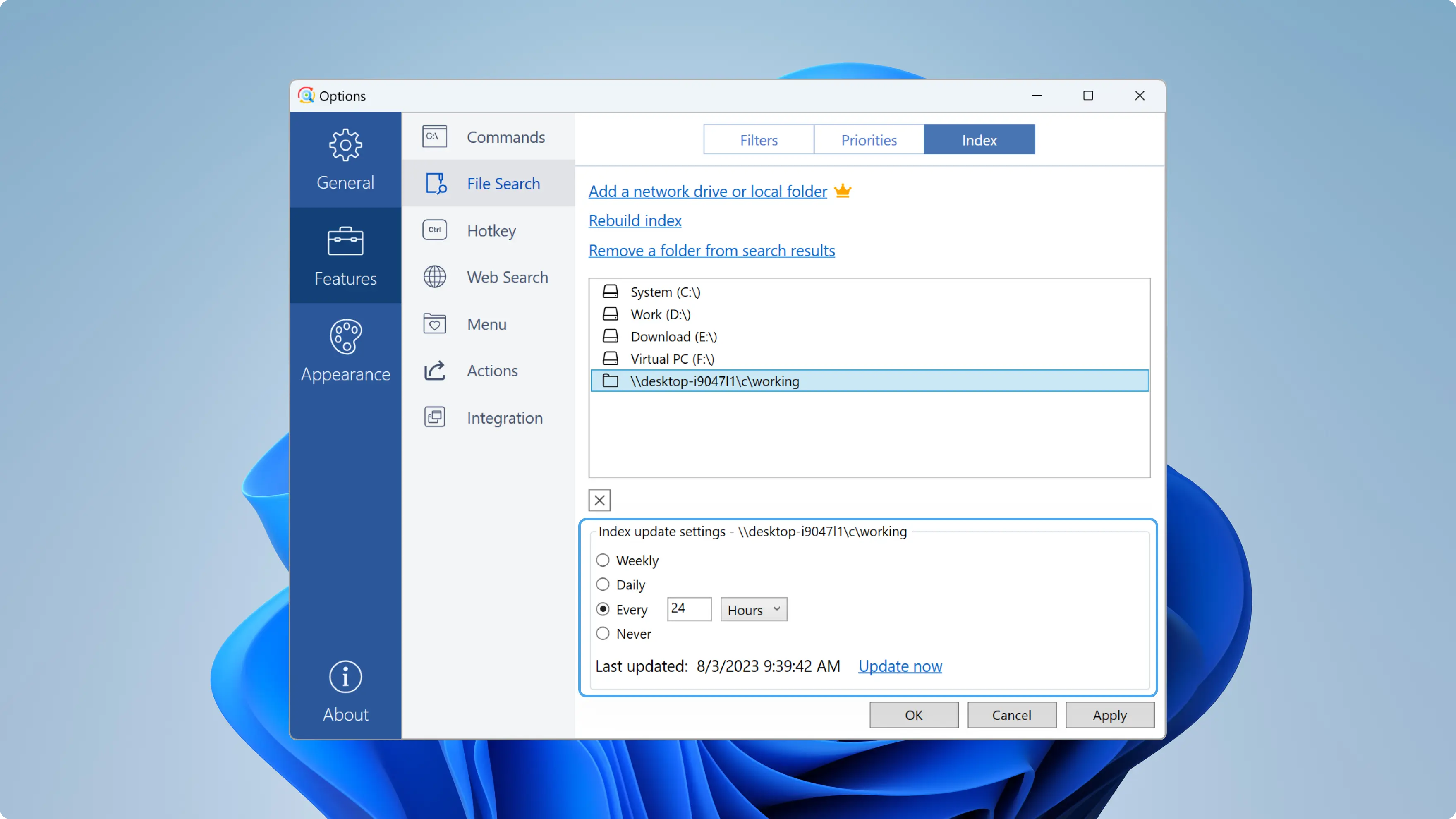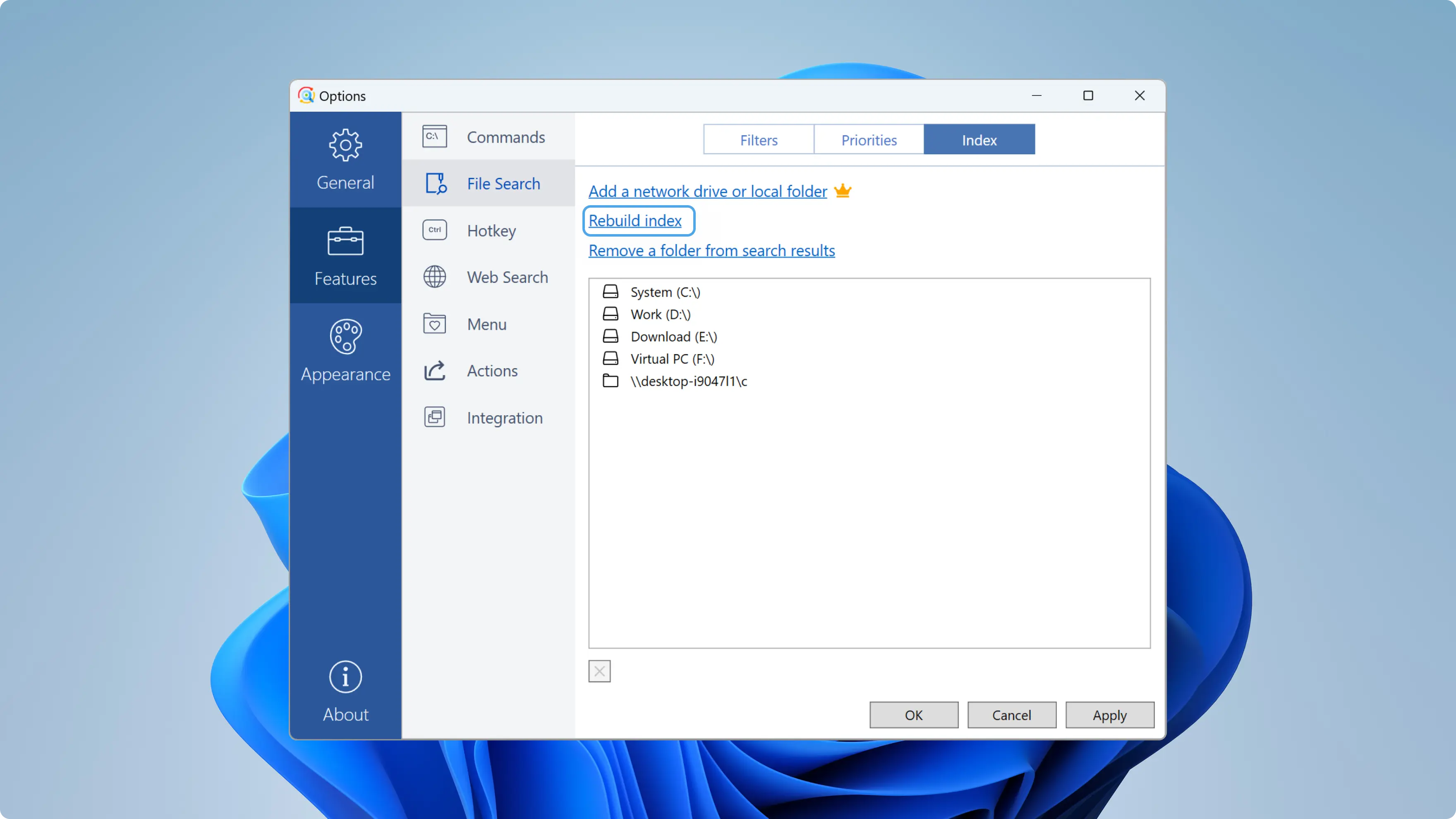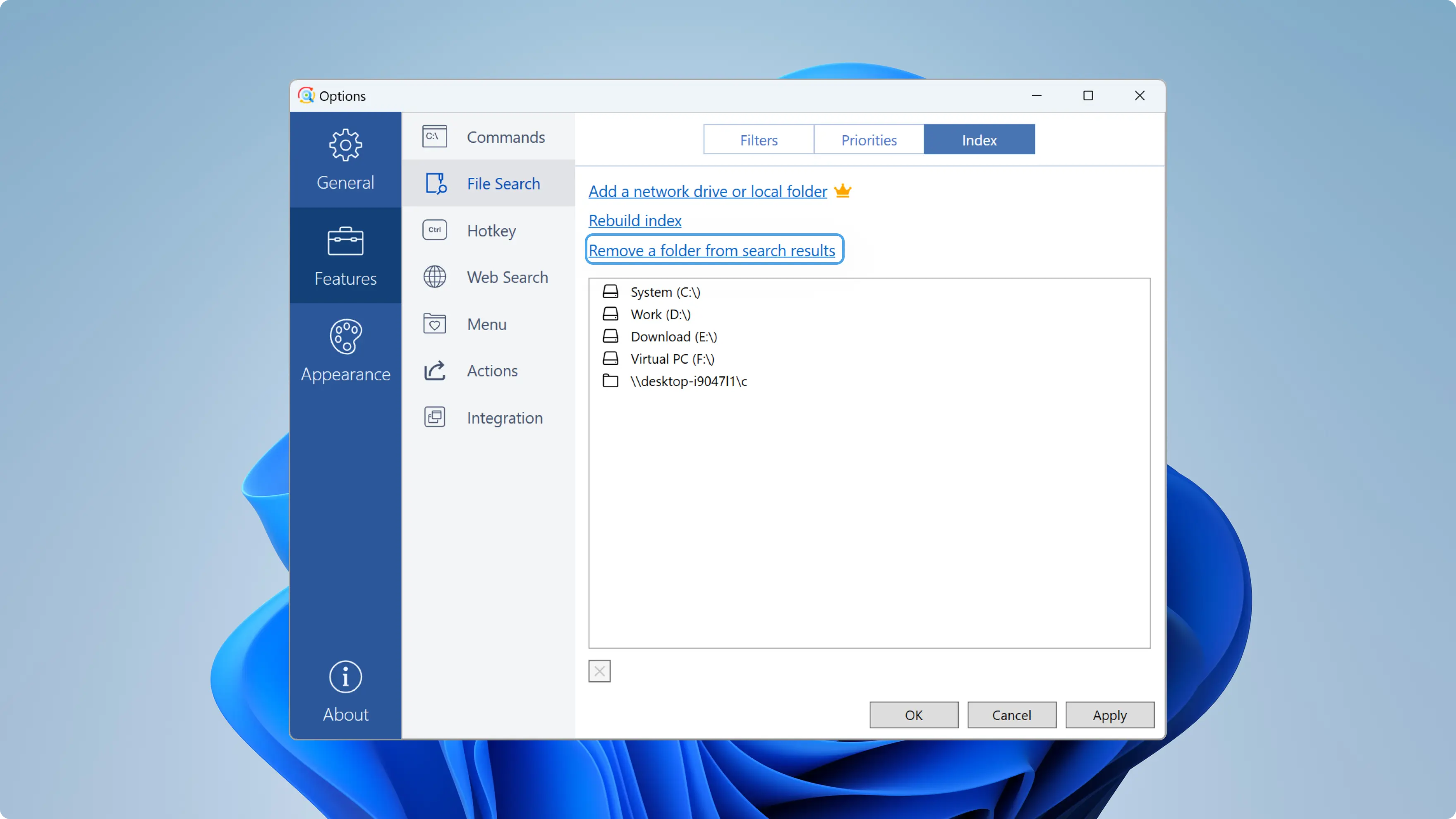Index
Right-click on the Listary tray icon and go to Options -> Features -> File Search -> Index
What is Index?
Listary has an advanced disk search engine, and its indexing mechanism is the foundation for providing quick and accurate search services.
The index scope defines the search scope of Listary. If you consider your computer a book, the index is like the book's table of contents, which helps you quickly locate your desired content.
Listary's indexing scope:
By default, Listary automatically indexes all NTFS partitions on your local disk.
You can check the current indexing scope here:

For non-NTFS partitions or network drives that can be opened with the Windows File Explorer, you can manually add them to the indexing list.
Add a network drive or local folder
Click "Add a network drive or local folder" and manually select the network storage, shared folder, NAS, external disk, and other non-local disk content you need to the index.

Listary can index local files in about 1-2 minutes.
Network files might take longer due to the amount of content and network speed. It's best to index only important content and avoid unnecessary system files.
Add a cloud storage
Listary supports indexing cloud storage as long as it has been mapped locally and can be opened in the Windows File Explorer.
If your cloud storage is mapped to an NTFS partition, such as
C:\D:\E:\, you can use Listary to search directly without any other settings.If your cloud storage is mapped to a non-NTFS partition, click "Add a network drive or local folder" and add the cloud storage's path to the index.
You can refer to the official docs of the cloud storage to manually map its content to the local.
Add a shared folder/network drive
Listary supports indexing shared folders/network drives as long as it can be opened in the Windows File Explorer. Map to local is not required.
Add a NAS
Listary supports indexing NAS as long as it can be opened in the Windows File Explorer. Map to local is not required.
Add an external hard drive / USB drive
Listary supports indexing external hard drive / USB drive as long as it can be opened in the Windows File Explorer.
If your external hard drive / USB drive uses NTFS format, Listary will index it automatically. No manual addition is needed.
Add a local folder
Suppose you only want Listary to index a specific folder rather than a broader range (like an entire disk or partition). In that case, you can remove other index ranges from the list and manually add the target folder.
Index update setting

Automatically added index: Listary can monitor in real-time. For example, Listary can search for the files/folders you just added.
Manually added index: Listary cannot monitor in real-time, and you need to set an index update cycle. Of course, you can manually update the index with the "Update Now" button.
Listary provides weekly, daily, and fixed update cycle options. If you choose "never", then Listary will only create an index when first added and will not update thereafter. However, you can manually update the index with the "Update Now" button.
Remove an index
Select the corresponding item in the list and click ✖️ to remove an index.

Rebuild index
The indexing mechanism of Listary effectively guarantees the normal operation of the search function, so you don't need to worry about the index option.
However, the indexing mechanism might fail in rare cases, causing Listary to not search for files properly or produce unusual search results. If you encounter such issues, click the "Rebuild Index" button to attempt to resolve the problem.

Do not rebuild the index in Listary unless you encounter problems.
Remove a folder from the search results
It is achieved by setting the ignore priority. For specific instructions, please refer to the Priorities.
